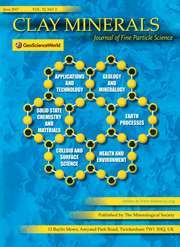Crossref Citations
This article has been cited by the following publications. This list is generated based on data provided by Crossref.
Hénin, S.
and
Caillère, S.
1975.
Soil Components.
p.
335.
Jarimi, Hasila
Aydin, Devrim
Yanan, Zhang
Ozankaya, Gorkem
Chen, Xiangjie
and
Riffat, Saffa
2019.
Review on the recent progress of thermochemical materials and processes for solar thermal energy storage and industrial waste heat recovery.
International Journal of Low-Carbon Technologies,
Vol. 14,
Issue. 1,
p.
44.


